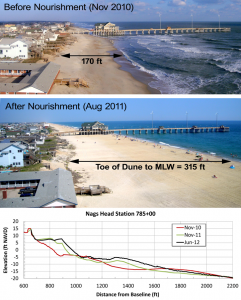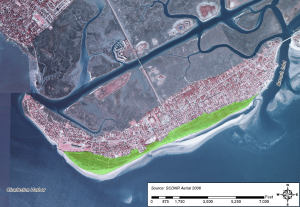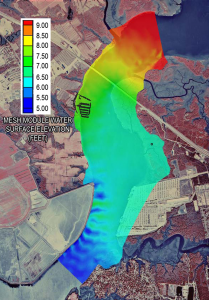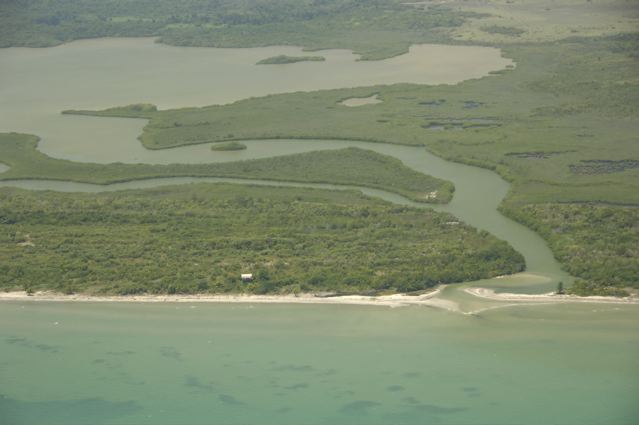Project Overview
Project
Beach Restoration & Groin Construction
Client
DeBordieu Colony Community Association
Dates of Services
1984-Present
Construction Dates
1990, 1998, and 2022
Size & Scale of Geographic Area
Project Length – 8,500 linear feet
1990 Project
Total Project Volume – 191,693 cubic yards
1998 Project
Total Project Volume – 262,386 cubic yards
2022 Project
Total Project Volume – 718,346 cubic yards
Groins Built – 3
Services Provided
> Feasibility study
> Numerical modeling
> Nourishment design
> Groin design
> State and federal permitting
> Environmental Assessment Reports
> Construction observation
> Post-project monitoring
CSE has provided coastal engineering services to the DeBordieu Colony Community Association (DCCA) since 1984. Early work included the first shoreline erosion assessment and a comprehensive tidal wetlands management plan. These studies identified the underlying causes and rates of erosion, demonstrating that beach erosion varied systematically in relation to the location of earlier inlets. This led to two nourishment projects by truck using inland sand resources (1990 and 1998). CSE also developed plans between 1989 and 1996 for beach stabilization via terminal groins at the south end of the 1.5-mile beach.
CSE’s long-term solution along the rapidly eroding (and armored) south end was postponed for 20 years due to opposition by certain residents and neighbors who were concerned about the adverse impacts of groins on downcoast property and habitat. The counterargument in support of groins with nourishment was that without any beach restoration work, the downcoast wilderness area would continue to lose over one (1) acre of uplands each year.
Ongoing erosion along DCCA property forced the construction of a seawall (1981) and resulted in the loss of the dry-sand beach along nearly half of the DeBordieu shoreline. Despite the presence of the seawall, numerous properties sustained damage during Hurricane Hugo (1989) and other storms. CSE’s recommended solution was large-scale nourishment and three low-profile “template” groins spaced 1,000 ft apart at the south end of DeBordieu Colony. Template groins are built with a fixed profile that seeks to mimic the natural slopes and elevations of a beach. This allows excess sand to pass over and around the structure while retaining a finite volume necessary to maintain a dry-sand beach in front of the seawall.
The project was permitted successfully including a rigorous monitoring and mitigation plan to compensate for future downcoast impacts. CSE’s modeling and empirical measurements predict that the project will double or triple the renourishment interval (from 5 years to 10-15 years) and save the community over $30 million in renourishment costs over the next 30 years. A primary benefit of the project is the restoration of a continuous dry-sand beach and wildlife nesting habitat in place of the seawall. The project is also expected to significantly reduce the vulnerability of oceanfront property and infrastructure during hurricanes.
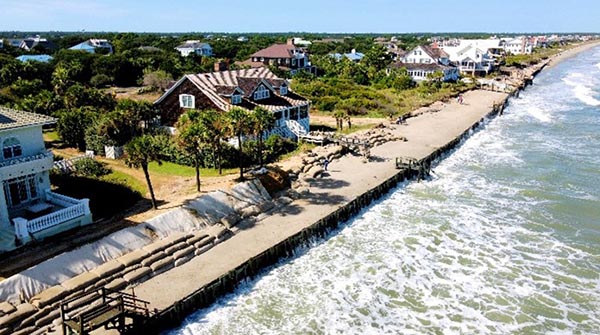
A pre-project photo of the nourishment area taken in 2020 shows the exposed seawall and sandbags that were installed by residents to protect properties from storm surge. (Post-project photo of this area is shown on the right.)
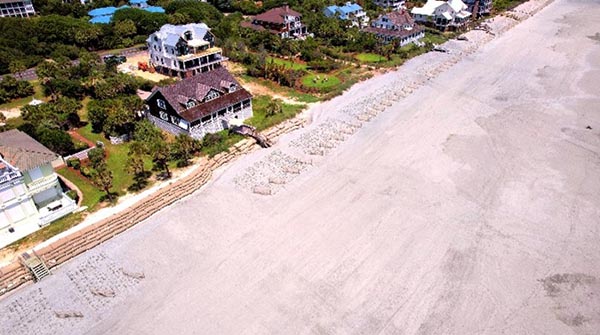
Post-project photo taken in 2022 showing a wide beach covering the seawall with sand fencing along the seaward face of the new dune. Property owners were required to remove sand bags that were in the nourishment footprint. (Pre-project photo shown on the left.)
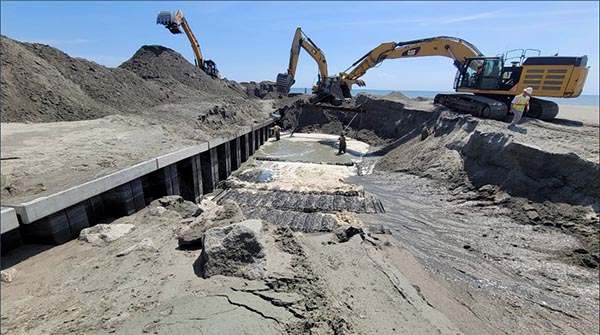
Sand-retaining structures for the south end of DeBordieu have been considered since the late 1960s. Given the uncertainty or variability of shoreline configuration in the presence of groins along the South Carolina coast, CSE evaluated the potential impacts of the project via numerical models.

